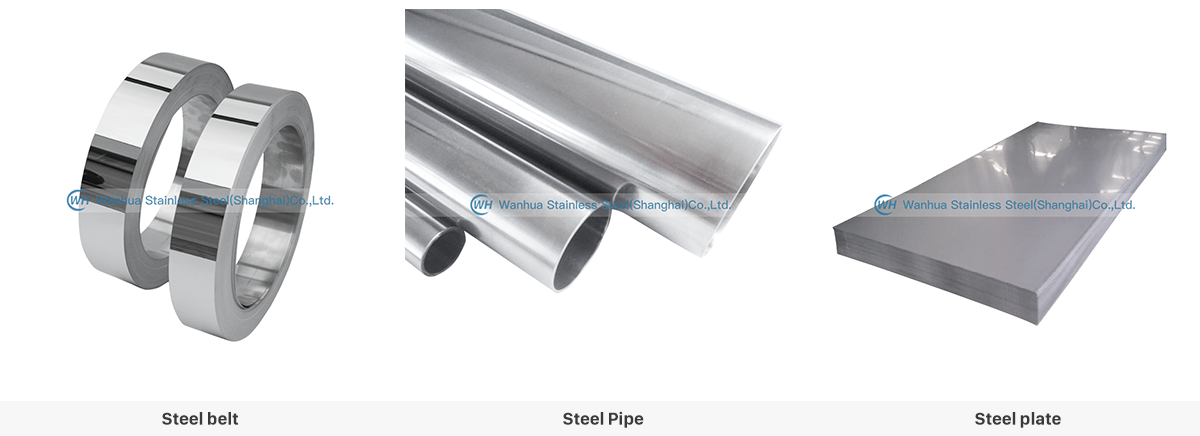In recent years, the automotive industry is continuously developing towards high quality and light weight. How to reduce energy consumption as much as possible under rated traction power to achieve high transport capacity and low cost of operation, that is, how to build green transportation equipment has become a society of today The topic of discussion.
In the automobile manufacturing industry, due to its high strength, stainless steel materials are relatively light in weight, especially after impact. The energy is stronger than other metal materials, compared with ordinary carbon steel vehicles! The long service life and manufacturing and assembly points have made stainless steel used in automobile manufacturing a world-wide expansion trend with a large potential market.

The following materials are commonly used steel in the automotive field

Stainless steel not only has corrosion resistance, but also has good physical properties and surface quality. It is widely used in automobile manufacturing. At present, the main application parts are the following categories.
1. Stainless steel for exhaust system: Most of them are ferritic stainless steels, which are the most widely used components of automotive stainless steel. 409L, 436L, etc. are commonly used stainless steel grades. From the point of view of economy and practicability, 0Cr11Ti ferritic stainless steel is often used in the exhaust system of some European and American countries. Japan basically uses 13Cr~17Cr ferritic stainless steel and its improvement.
2. Stainless steel for automobile fuel tank: In addition to the danger of fuel leakage, the fuel tank made of stainless steel has excellent corrosion resistance and good forming performance, and can save or simplify the coating process and is easy to recycle. 304L, JFE-SX1, etc. are commonly used stainless steel grades.
3. Stainless steel for automobile frame: The combination of the design of the combined automobile frame and the excellent performance of the stainless steel material can make the manufactured automobile have good impact resistance, light weight, high safety and reliability and long life. In addition, such The frame can also be fully recycled. 409L, 3Cr12, 304L, etc. are commonly used stainless steel grades.
4. Automotive stainless steel parts: There are mainly stainless steel sealing rings and heat exchangers. The sealing rings are generally made of 301 stainless steel. The heat exchangers generally use stainless steel materials such as SUS304, SUS430 and SUS409L; Cr-Ni austenitic is also used on some parts Body stainless steel; 0Cr17, 0Cr18Ni9 are used for oil cooler plate heat exchanger; 0Cr17 is generally used for headlight retainer, large passenger car handrail, safety railing, etc.
5. Stainless steel for car decoration: stainless steel inserts, antennas, wheel covers, etc. are used on small cars, and stainless steel is also used on handrails, safety rails, and booms of large passenger cars and vehicles. In order to reduce costs, rearview mirrors mainly use SUS430J1L series stainless steel; car wipers mostly use SUS430, SUS304, SUS301, etc. Stainless steel is also frequently used in safety devices on automobiles. For example, the seat belt tensioner uses SUS301 stainless steel, the airbag sensor and booster pump mainly use SUS304 and SUS304L stainless steel, and the ABS induction ring uses SUS434, SUS444 and other steel types.
6. Automobile frame or overall automobile shell: An automobile frame or integral automobile shell made of stainless steel containing 11%-12% Cr, commonly used brands are 00Cr11Ti, 0Cr11Ni4Ti, 00Cr12NiTi, etc. Some countries have used stainless steel in large buses, coal transport vehicles, urban subway vehicles, etc.
The automotive industry is currently the fastest growing stainless steel application field. Stainless steel is also widely used in public transportation vehicles such as buses, subways, and high-speed rail vehicles. The market's demand for high-end vehicles has greatly increased. Considering the costs of manufacturing, maintenance and energy consumption, stainless steel cars are much lower than aluminum alloy cars and carbon steel cars, so stainless steel cars are the most economical vehicles and have great development. Prospects make the use of stainless steel in the automotive industry a worldwide expansion trend and have a large potential market.
In 2017, a company in the automotive industry in Switzerland, sales of stainless steel cold plates for automotive exhaust systems, duplex stainless steel, high carbon martensite, ultra-pure ferrite, 316L, and weathering steel increased significantly year-on-year, and the market The occupancy rate has further increased and the benefit contribution has been outstanding.






